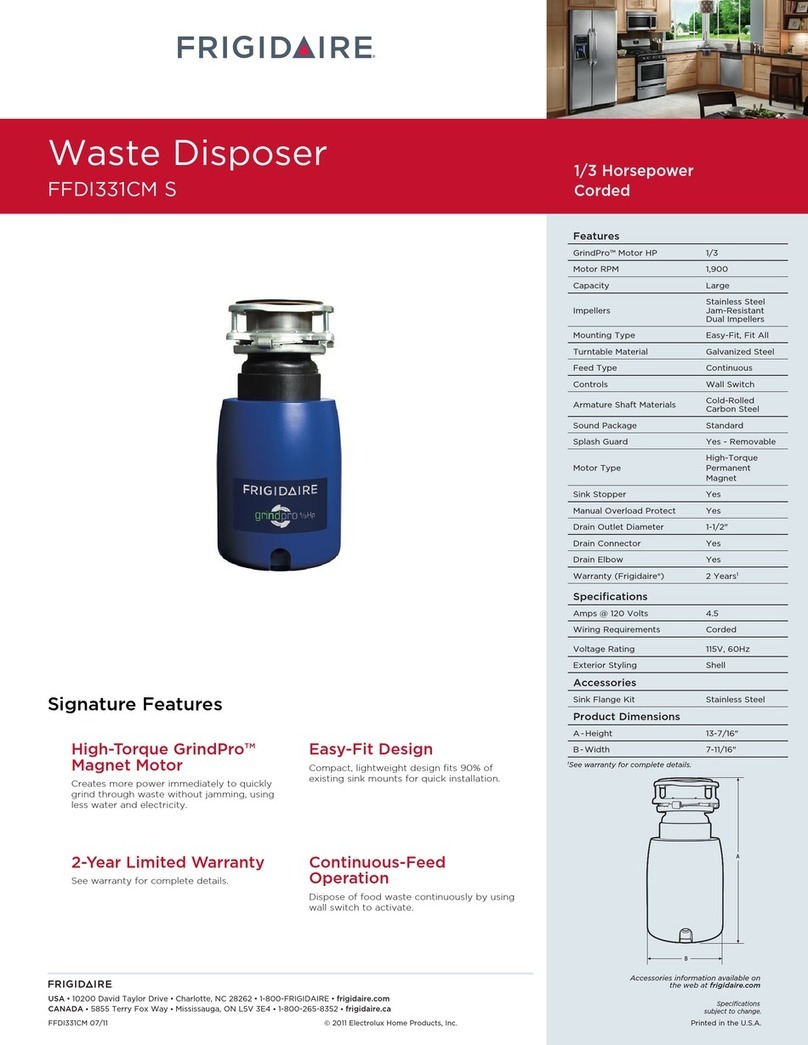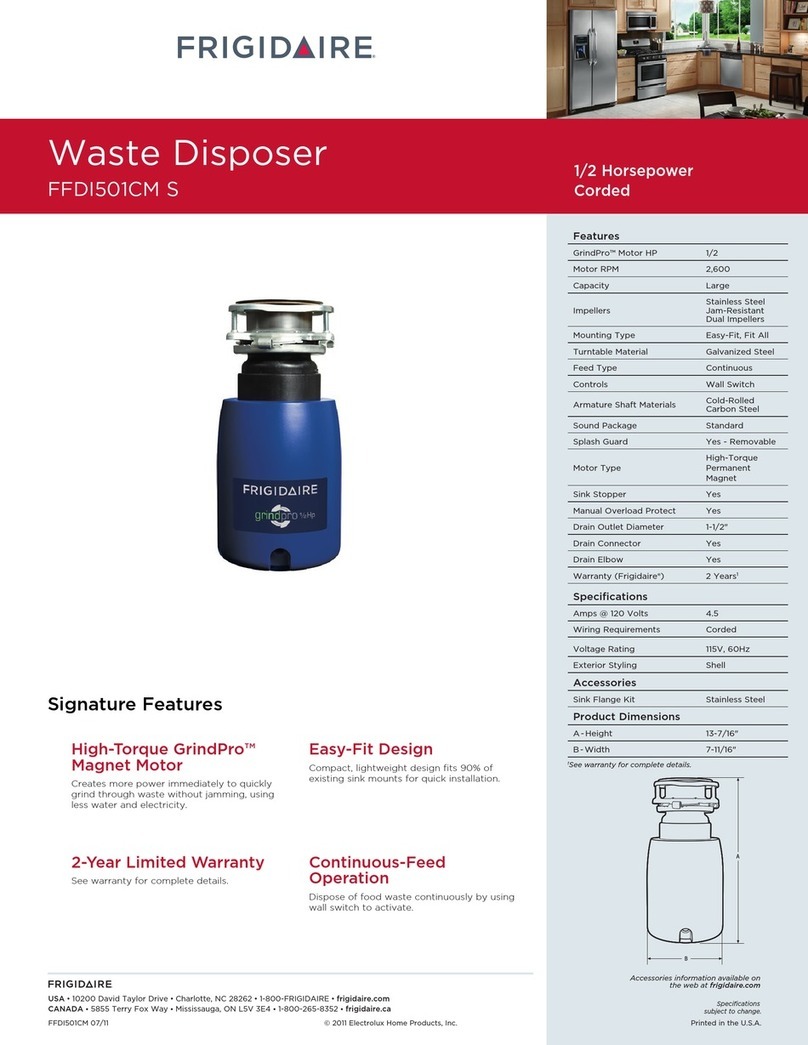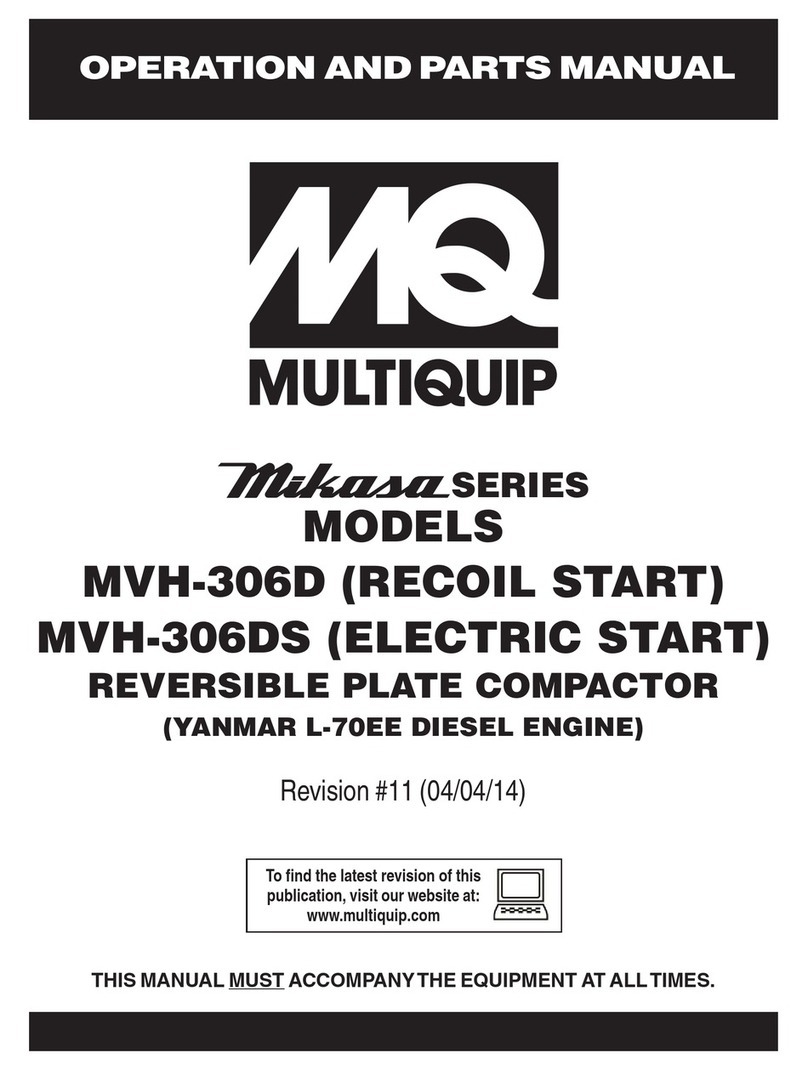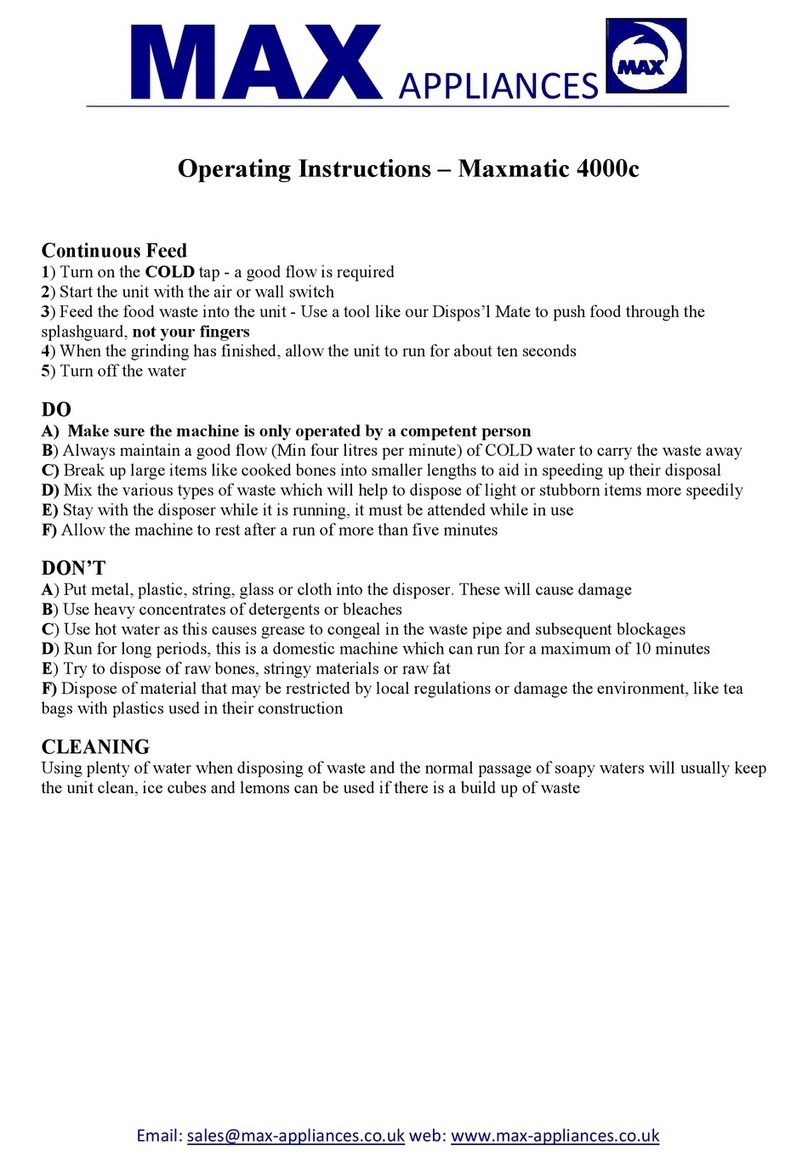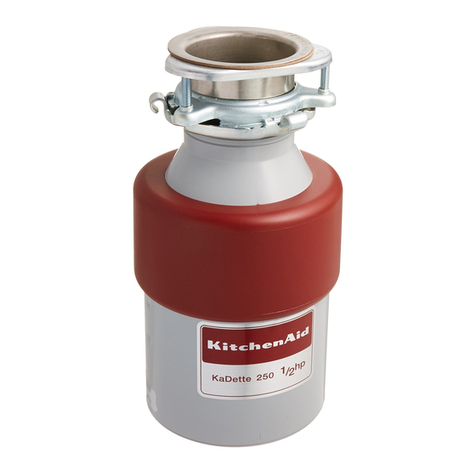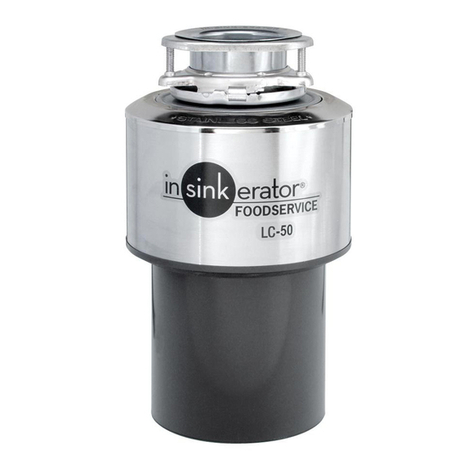Frigidaire MTC500RBM3 User manual
Other Frigidaire Garbage Disposal manuals

Frigidaire
Frigidaire FPDI103DMS Installation instructions
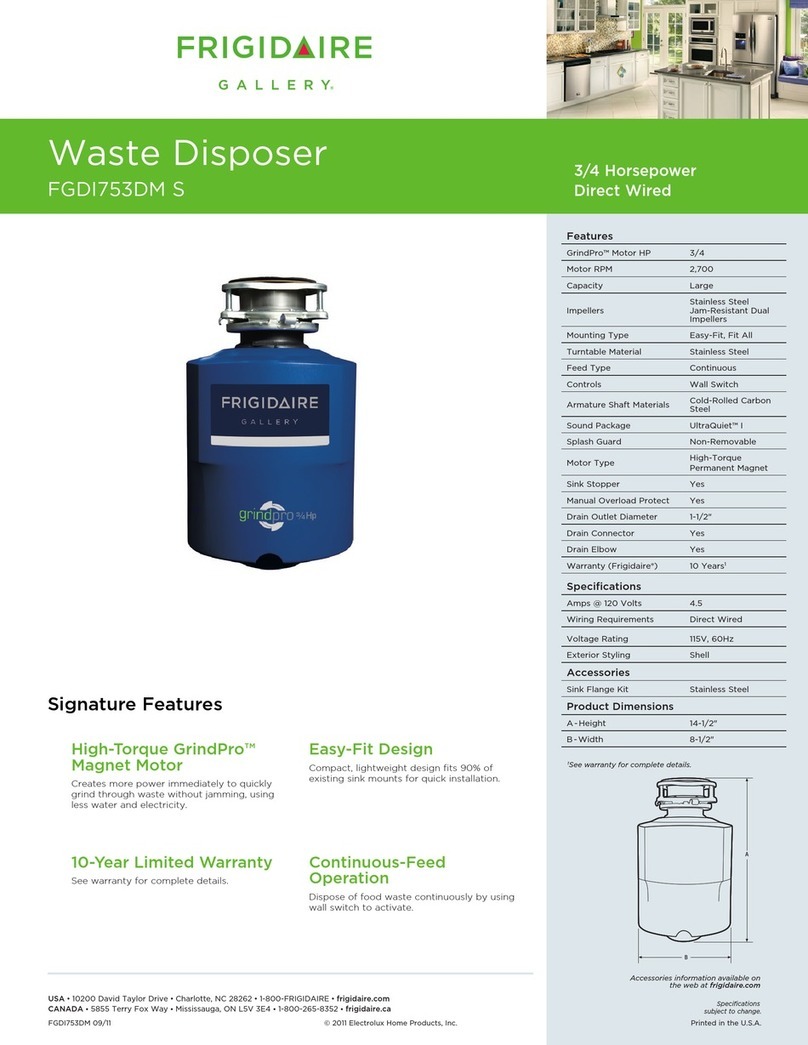
Frigidaire
Frigidaire FGDI753DMS Installation instructions
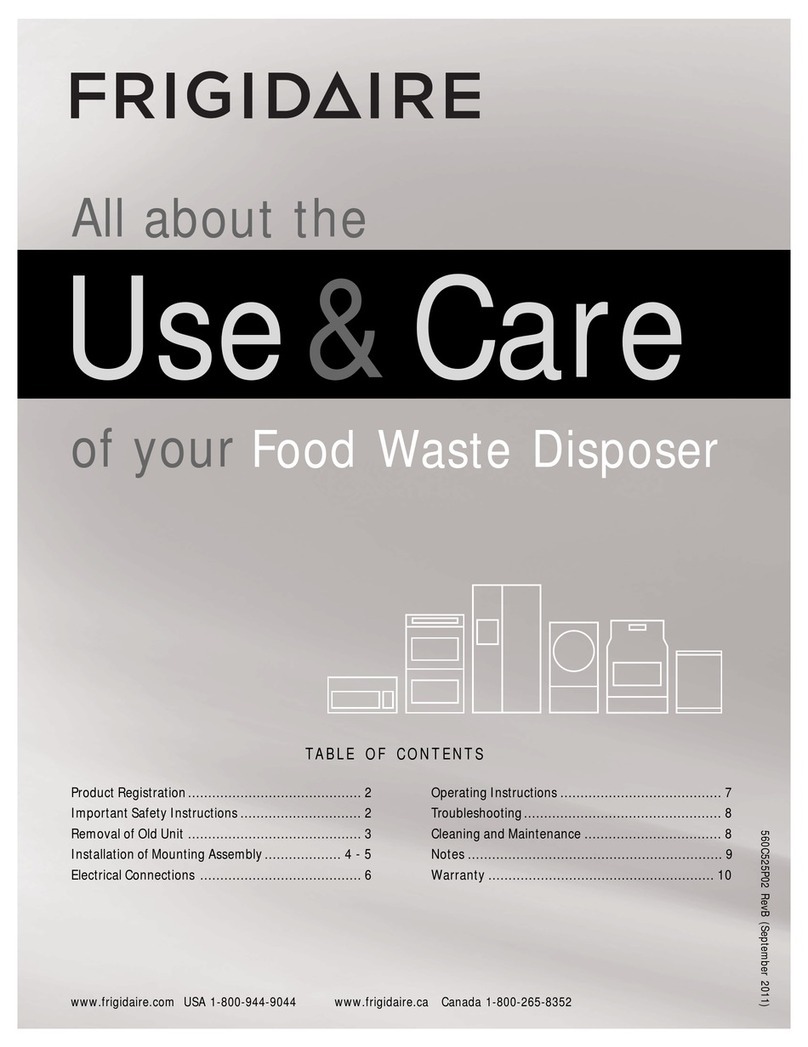
Frigidaire
Frigidaire Food Waste Disposer Owner's manual
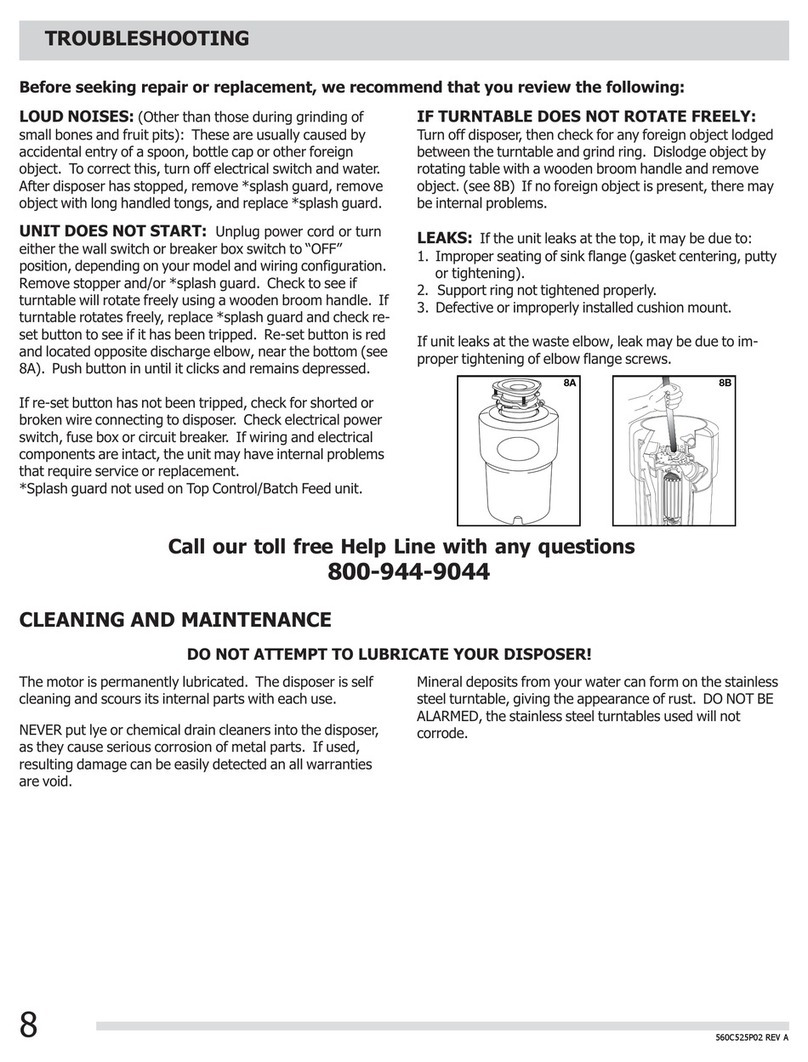
Frigidaire
Frigidaire FFDI331CMS Owner's manual
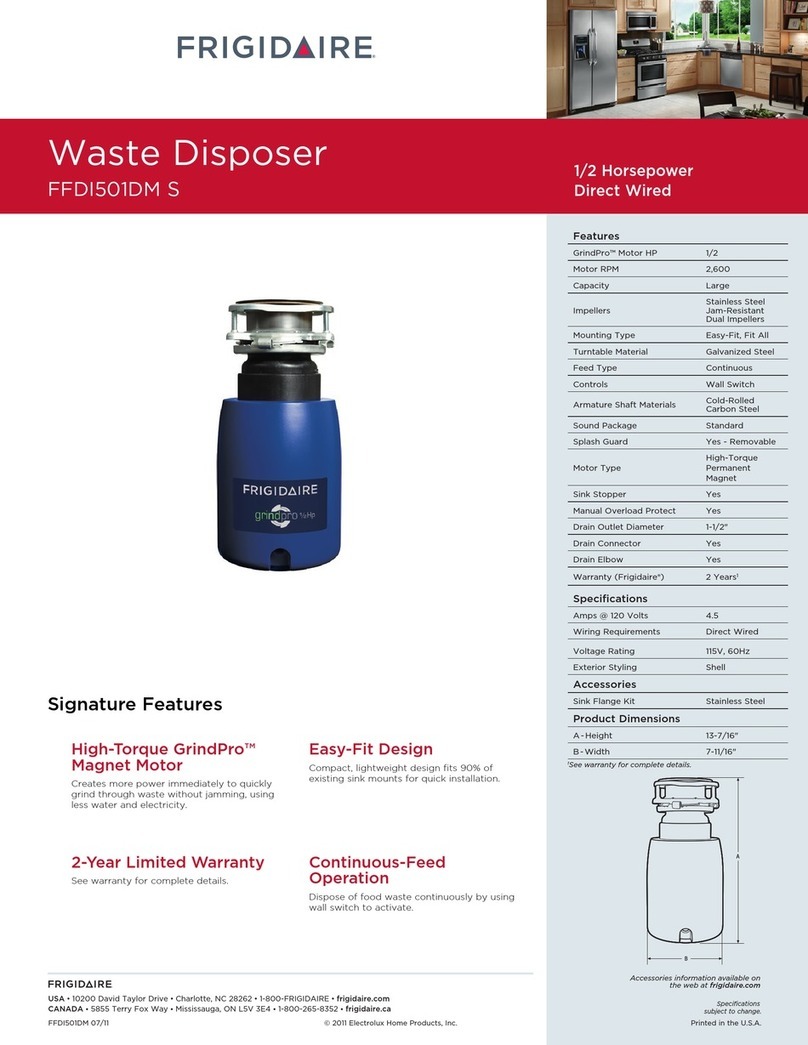
Frigidaire
Frigidaire FFDI501DMS Installation instructions
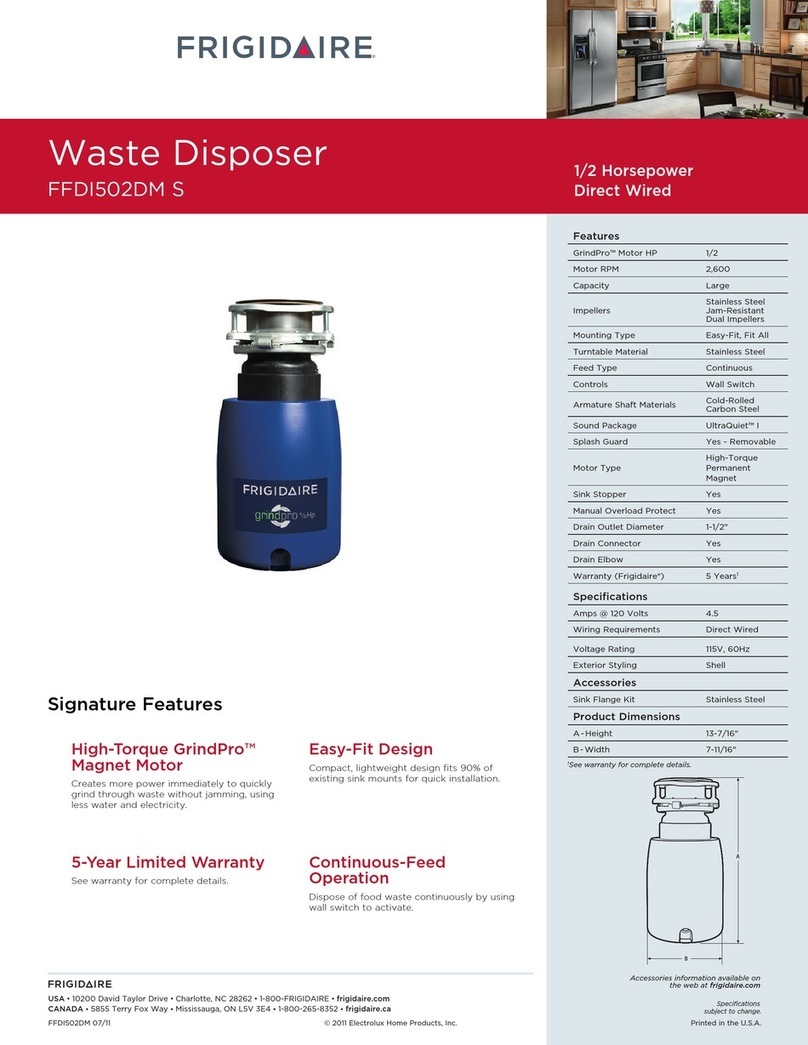
Frigidaire
Frigidaire FFDI502DMS Installation instructions
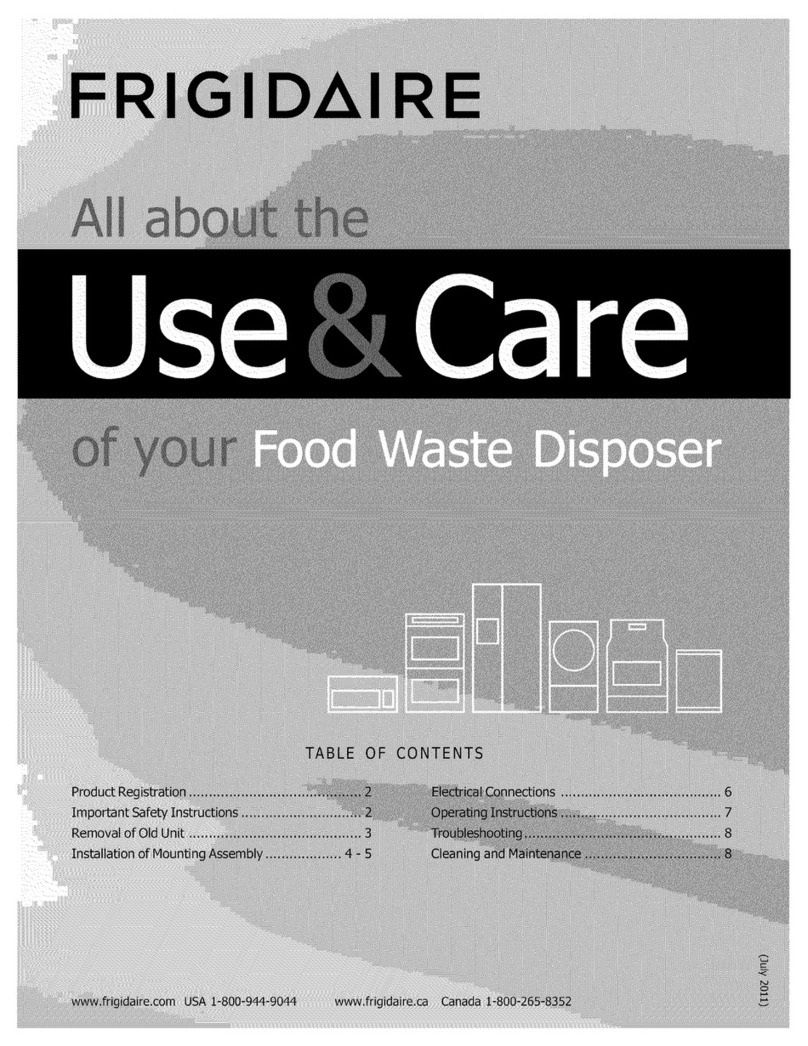
Frigidaire
Frigidaire FFDI502DMS0 Owner's manual
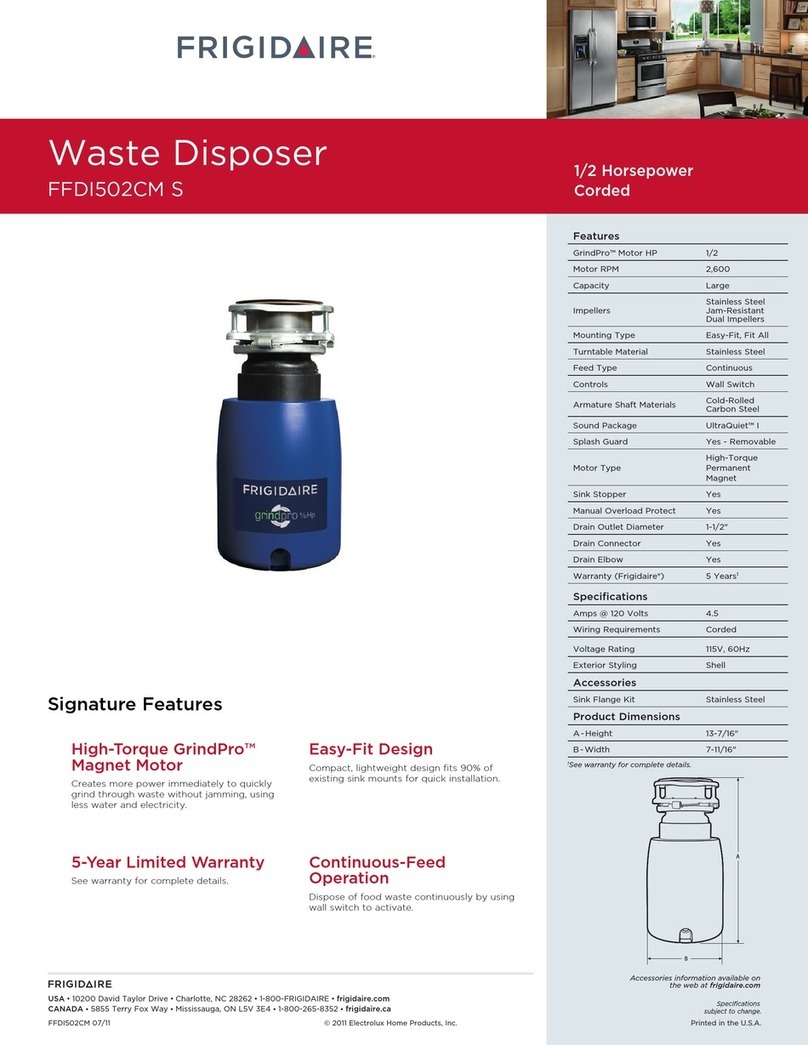
Frigidaire
Frigidaire FFDI502CMS Installation instructions
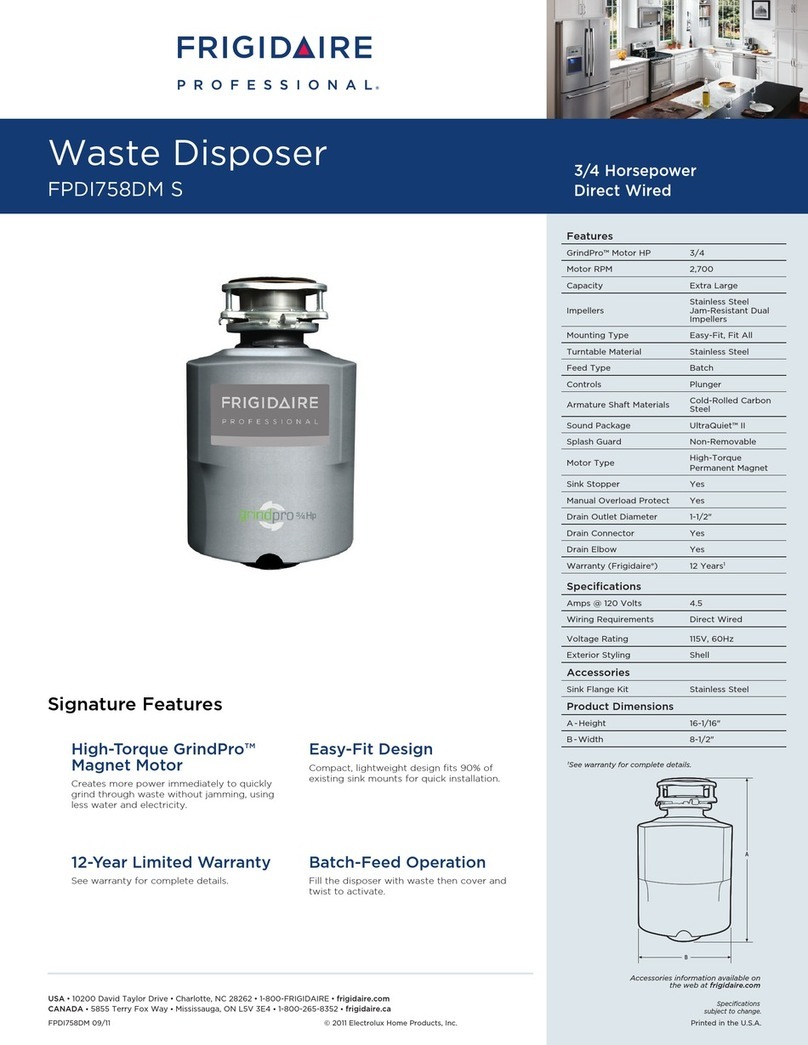
Frigidaire
Frigidaire FPDI758DMS Installation instructions
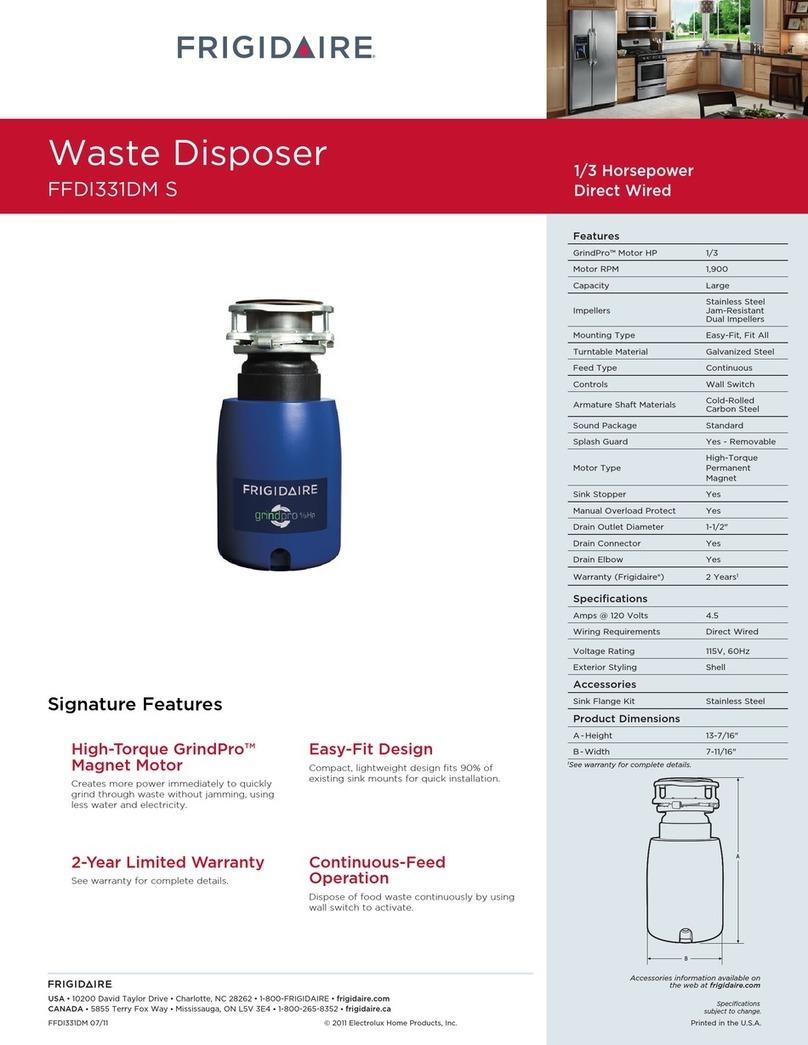
Frigidaire
Frigidaire FFDI331DMS Installation instructions
Popular Garbage Disposal manuals by other brands
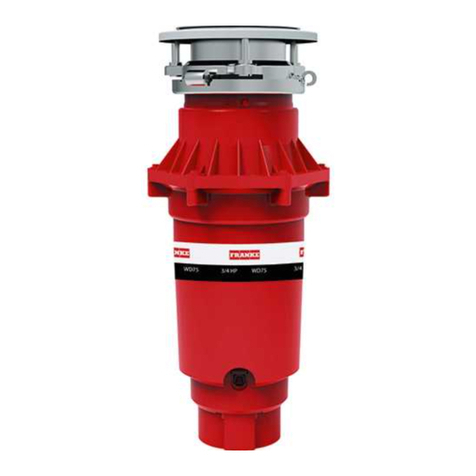
Franke
Franke CE-50 User and installation manual
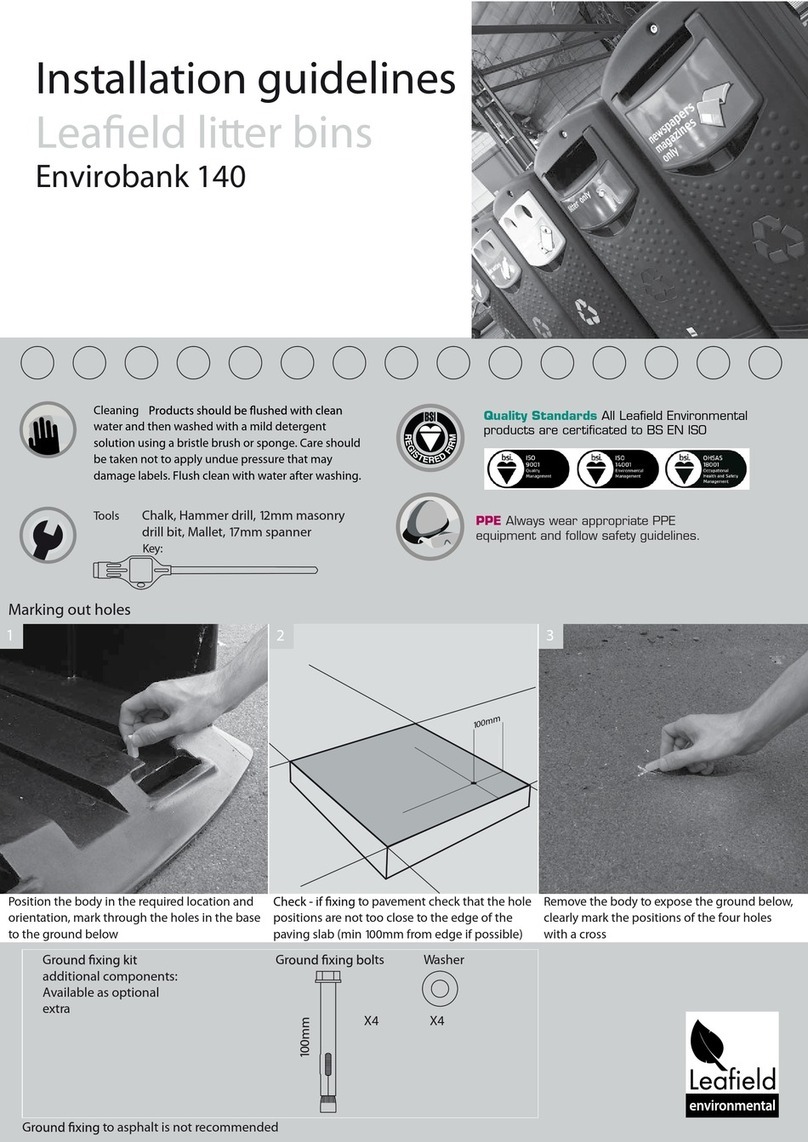
Leafield Environmental
Leafield Environmental Envirobank 140 Installation guidelines
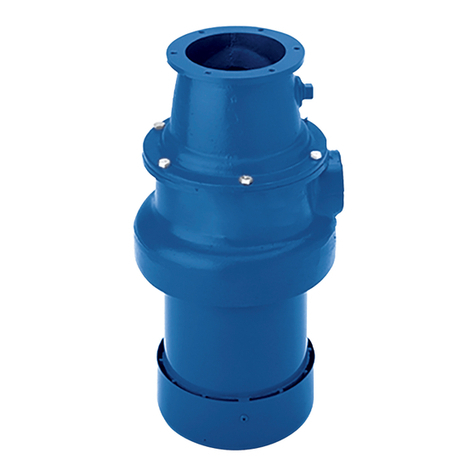
Insinger
Insinger I-6 brochure

KitchenAid
KitchenAid KCDB250G2 parts list
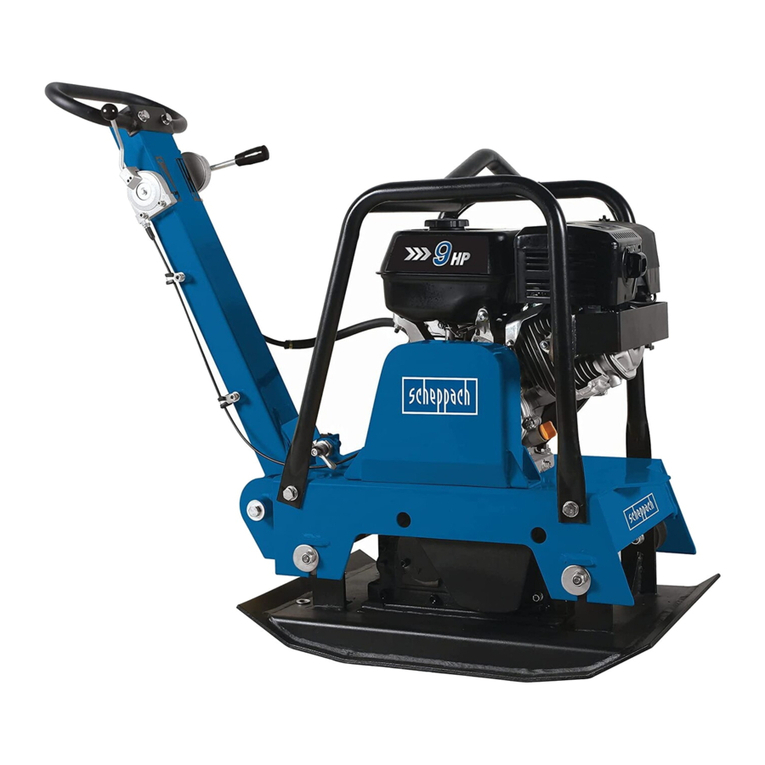
Scheppach
Scheppach HP3000S Translation from the original instruction manual

Zanussi
Zanussi DU 4400 Instruction booklet

Westinghouse
Westinghouse 3/4 HP owner's manual

Haigh
Haigh Quattro Vanguard Original manual
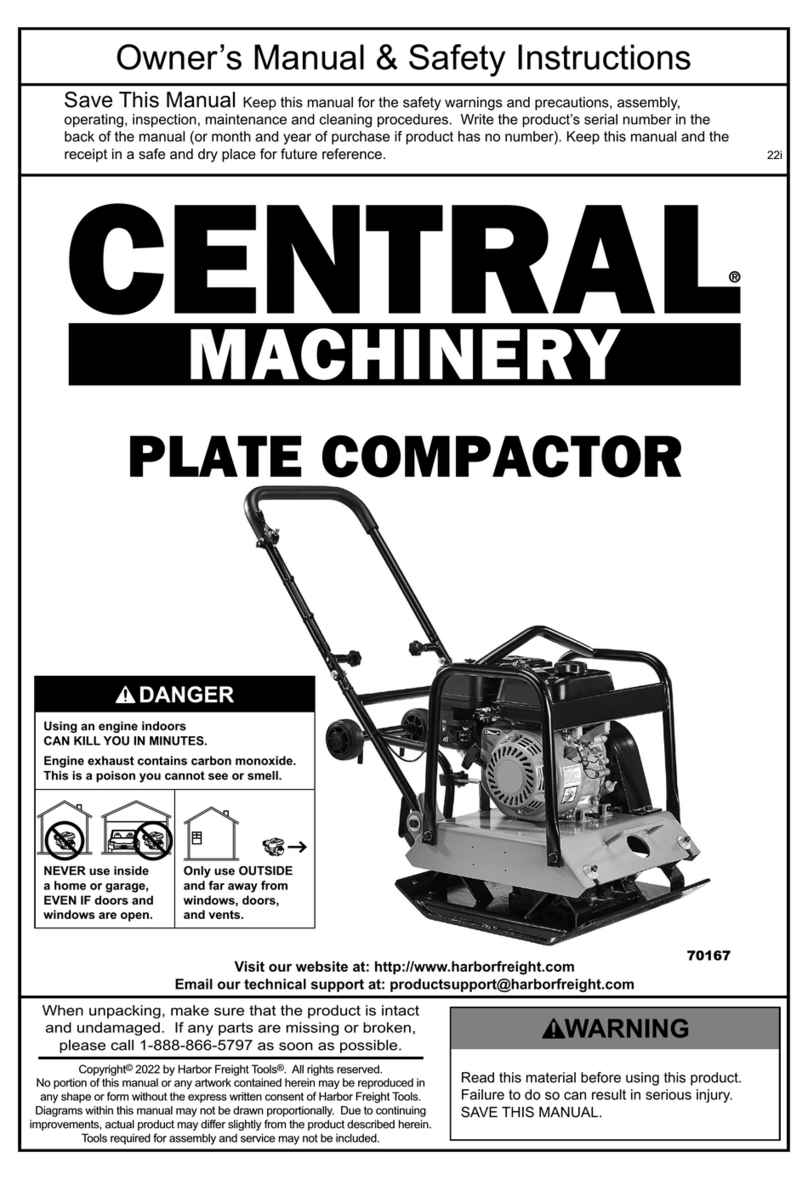
Central Machinery
Central Machinery 70167 Owner's manual & safety instructions
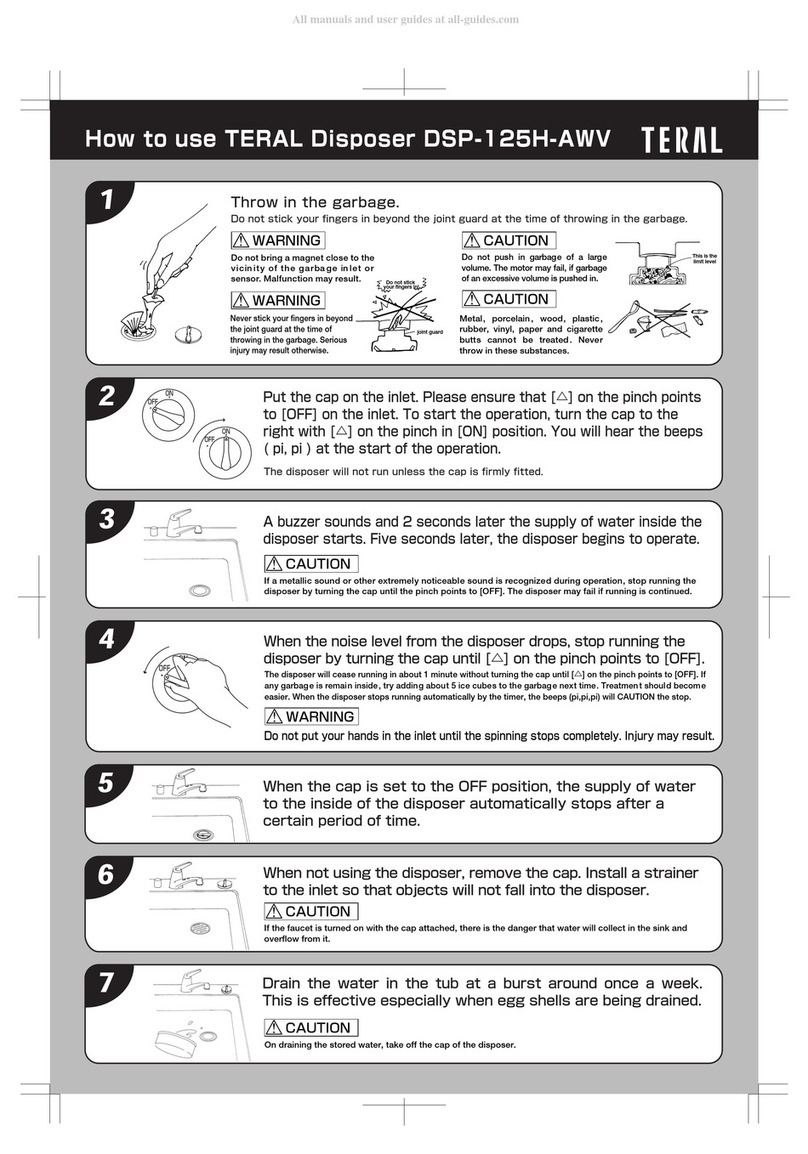
Teral
Teral DSP-125H-AWV Quick start manual

Mistral
Mistral Ultra 10504 Specifications
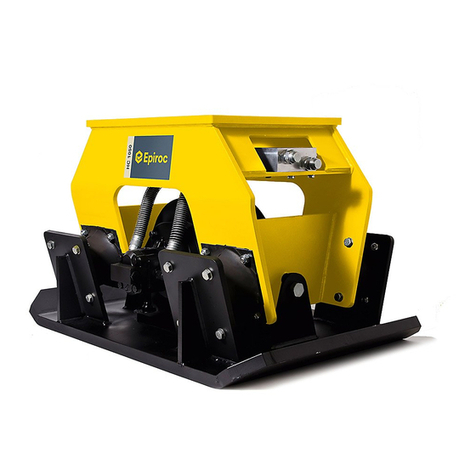
Atlas Copco
Atlas Copco HC 150 Safety and operating instructions
